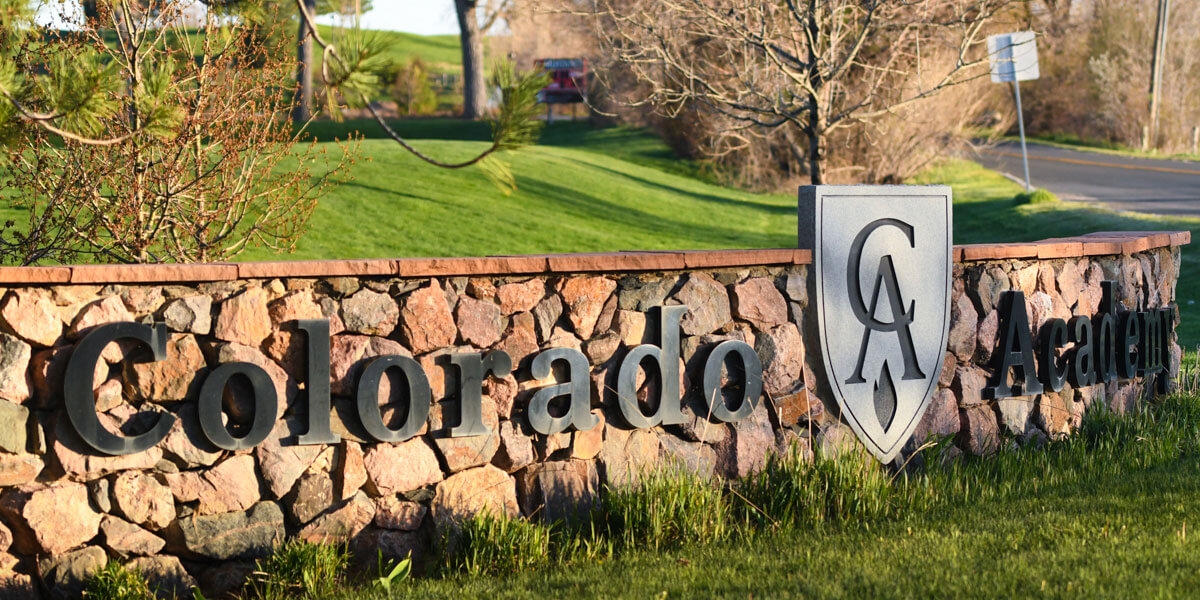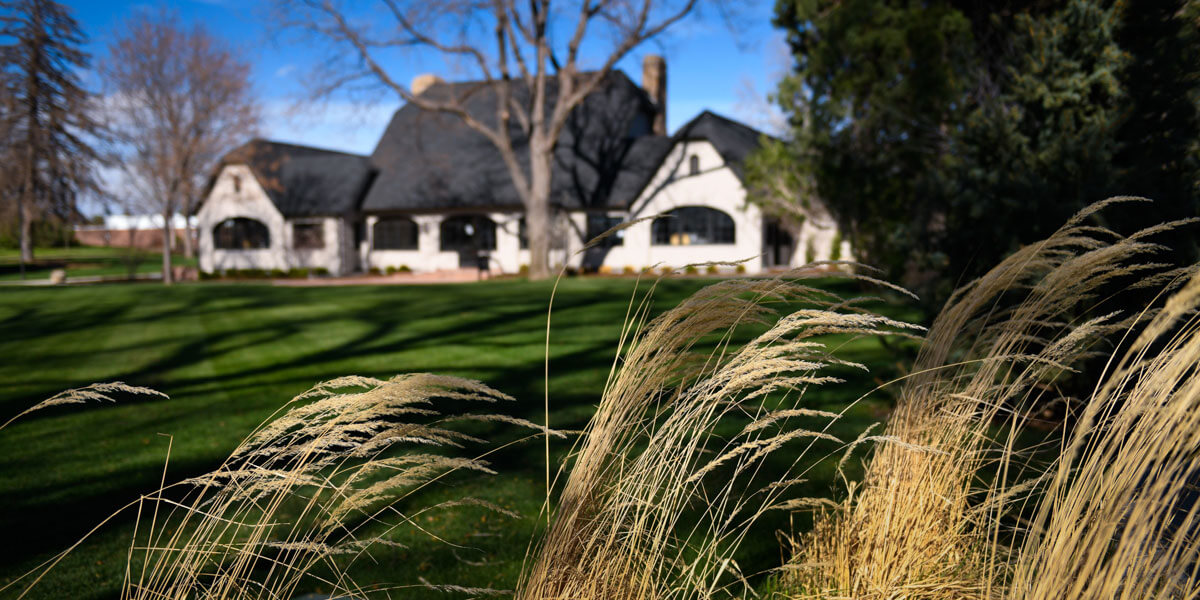One of the things I most appreciate about Colorado Academy is the freedom we are afforded as an independent school to make educational decisions that are in the best interests of teaching and learning. We can be agile in difficult times.
We can quickly add courses, offer new programs, and get rid of approaches that are outdated or no longer effective. On a curricular level, our highly trained teachers have great freedom and flexibility to enhance core coursework. Principals can identify and make improvements without long, drawn-out processes that delay implementation. Our mental health counselors, who monitor the mental well-being of our students, can move swiftly to identify community needs.
To be sure, there are some guidelines that we must follow that come from outside authorities. On the whole, though, we have far more freedom to enact change and be, not just responsive, but proactive. That is one reason why the faculty and administration were able to move to remote learning so effectively, as we anticipated the arrival of COVID-19. We have been able to continue our efforts to support our students and maintain connections with our community.
So many unknowns
Right now, I am looking ahead to next year. We are definitely in the so-called “fog of war.” War is such a complex thing that it is impossible for military leaders—no matter how great their strategic genius—to predict accurately what might happen. Every decision matters. There can be luck. Assumptions about the enemy’s intention can be wrong.
In our war against COVID-19, there are things we know, and there are still things we don’t. We know that we are dealing with a highly contagious disease that is easily transmitted. We know that the way the virus affects people is unpredictable and that children are less susceptible to this virus. We know that it can cause severe problems, including death. We know that we do not have enough testing to understand the scope of the pandemic. And, we know that a vaccine is many months, if not years, away. What we do know is that more Americans died of COVID-19 in just nine weeks than died in the more-than-decade-long Vietnam War. Further, we are painfully aware that COVID-19 has devastated the global economy.

Schools are key
We also know that re-opening schools will be essential to getting our economy going again. Parents cannot work if they have to stay home and watch young children. We also know that the impact of school closures has a ripple effect. Throughout the U.S., there is a spike in domestic violence. There are impoverished families in America who rely on schools for meals. There is a rise in depression and anxiety, as children go through this difficult time. (Anecdotally, I believe that is less true with younger children, who love having their parents around. But, it is the inverse for parents of young children who are struggling in this environment.)
In this time of virtual learning, we are reminded why bricks-and-mortar schools and in-person learning matter. Although online learning serves a purpose, humans were built for real connections, and we are all starved for it in this moment in history. I heard from one parent recently who told me that their CA Upper Schooler said, “I will never complain about school again.”
Planning for the future
Under these circumstances, how does a school leader plan in the face of changing and uncertain conditions?
Like other institutions, CA will be guided by state and local health and governmental authorities. Most important, we are committed to safety and learning. We are committed to sustaining a school with a long tradition. We are committed to preserving our culture. Surely, our reality will look different in August and September.
While we all hope that life will go back to normal, I do not believe any of us can count on that. It has been helpful to see what schools in other parts of the world have done to re-open and to see whether schools become places of transmission. At CA, we have prepared three different learning scenarios to approach this uncertain future to ensure a continuity of learning for our students.
A variety of scenarios
Our scenarios include having all students back on campus, having all students learning remotely, or having students in what we call “CA Flex,” a hybrid model in which students are split into two groups and alternate with half on campus and half at home. This allows for lower classroom density and greater social distancing. We need to be prepared in case there are shifting closures and government or health agency guidelines that direct how we operate. We already know that we can do remote learning well, and we have been working this summer to fine-tune our program so that we can respond even better next year. Equally important will be our ability to shift swiftly and easily from one scenario to the next.
We also plan to stagger schedules and have Upper School students begin at 9:30 a.m. every day, reducing the number of people coming to campus at any one time. This also allows for greater social distancing on buses. The required distancing will have a major impact on students eat lunch every day. Already, we know one or more divisions will be delivered sack lunches and will eat picnic style outdoors to take advantage of Colorado’s beautiful weather. We also know that larger gatherings continue to be out of the question as health guidelines limit the size of school events. There is not an aspect of our school operation that is not touched by this pandemic. So this is the challenge before us is to continue to teach as we operate a school as safely as possible.
Clearly, there are all kinds of unknowns that could trip up any of these plans. If we go back to our war analogy, our enemy, COVID-19, has more momentum on the battlefield. We know that social or physical distancing is going to be important and also the limitation of mass gatherings. But in nearly every school in this nation, a typical school day could be considered a mass gathering. So this is the challenge before us: how do we operate a school as safely as possible?

Staying safe
I wanted to convey to our community how thoroughly and methodically we are thinking about this. Whatever we do, we have to keep our community safe and protect public health. We are looking at how we operate in an environment in which we will have to take student and employee temperatures every day. We will modify how we clean buildings, so they are cleaned throughout the day. We are going to step up efforts to think about personal hygiene. We are a relatively open campus, but COVID-19 is forcing us to rethink how we manage visitors and classroom volunteers. We have to think about bus and dining room services. Also, how do we manage arts and athletic events?
One thing that is clear to me is that there will be significant additional expenses. We must invest more in how we support educational technology. If we think about tuition as the fulcrum on a seesaw, it is supporting the school’s operations. In our reality of remote learning, one side of that seesaw has gone down, representing the changes in program and the amount of contact time students have with teachers. But, the other side of the seesaw, representing institutional and employee energy, has gone up in tremendous ways. All of us are working harder than ever. I want our families to understand the business aspect of our response, as we do all that we can to sustain our community. I hope you will continue to support CA, as we work to sustain all members of our community so that they can remain at CA.
Looking forward to better times
The good news is that this crisis will end, and we will be stronger by the end of it. I believe medical scientists will develop treatments, and we will get our supply chain to a point where hospitals are not overrun. Nonetheless, I want us to be prepared for next year. Students need to learn. While a college student might take a gap year, that is not in the interest of a younger child’s growth. There is so much happening in brain development from infancy to 18 years old. It’s an exponential scale. We need to ensure that students continue to grow and learn. We are all adaptable, and we will make this work. We will do all that we can to serve children in the months and years ahead.
